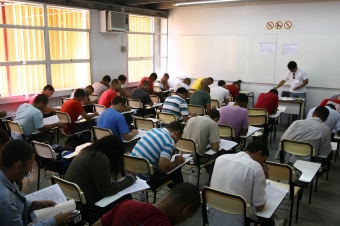Summary:
The activity focuses on the relationship between the progressivity of taxes and the principle of the ability to pay. It is intended that the students are able to analyze judged people using a critically mode. To do so, they analyze one jurisprudential debate inserted in the macro theme about the capacity to payment. It was selected a set of decisions about the progressivity of the actual taxes in the previous scenario and after the enactment of Constitutional Amendment number 29 for a critical analysis about the votes made by the judge ministers.
Objective:
- GENERAL GOAL: the class is inserted in the course of tax law, when it treats with the principle of the ability to pay, a fundamental and basic principle to the class.
- SPECIFIC GOALS: The goal seeks to know how the principle of the ability to pay is interpreted in different ways in the Federal Supreme Court (FSC) and also to show how the jurisprudence can be examined critically in the light of their incongruities and contradictions.
- It is expected that the student has contact with the jurisprudence and develop critical thinking and the capacity to discuss articulately.
Dynamics:
-METHOD: case method.
- REQUIREMENTS: for the students, there was an obligatory previous reading of the relevant votes. For this, the class was divided into groups, each one getting a determined vote. In the IPTU case, the division can be done in two ways: (i) group that reads the favorable votes and group not in favor of progressiveness, or (ii) Group reading judgment before to Amendment No. 29, after the same amendment and of the ITCMD. In the description of the development of the dynamics it was considered the first form.
The professor preparation consisted on the selection of the reading votes, generally in accordance with the relevance and extent.
- INTRODUCTION: the professor gave a presentation of the topic and the debate that took place in the Federal Supreme Court. The class was divided into two groups to discuss the main arguments of the two positions - in favor and against. According to the number of students in class, it was formed subgroups of four components among those who analyzed the same votes. The introduction lasted 10 minutes. Obs: Thus, assuming there were 48 students, 24 components would make the reading and the analysis of each position, which would be divided into 6 subgroups of 4 components for each position
- DEVELOPMENT OF THE DYNAMICS: the dynamic was developed in two stages.
Step 1 – The students debated internally in its subgroups for about 20 minutes, during which the professor circulated in the classroom monitoring and fostering the discussions. Then, she asked each subgroup about the analyzes and reflections made, noting on the blackboard the most important points. The debate lasted 20 minutes.
Step 2 - the professor started a second debate between everyone, considering the arguments on the blackboard, asking the groups of favorable position which were the main arguments of the opposite position groups and vice-versa. Each group had a writer, who said how the discussions were. The professor selected a subgroup randomly and confronted his position with the position of another subgroup. She was systematizing the positions and enriching the debates with other readings. This stage lasted 30 minutes.
- END OF THE DYNAMICS: during the last 20 minutes of the class, after the debate, the professor explained the panorama before and after the Constitutional Amendment No. 29 and made a critical closing about it. The students were challenged to criticize the arguments used, the evolution of the jurisprudence about the progressiveness content and the appropriateness, or not, of the decision made. The professor discussed the congruence and contradiction of the decisions and votes of the own ministers in several judgments, the important role of constitutional provisions and its relation with jurisprudential precedents.
- OBSERVATION: the same dynamic can be used for other controversial themes that count on the jurisprudence or relevant judged people.
- ATTENTION IN THE CLASSROOM: it is recommended that the professor has a good sense of jurisprudential debates.
Evaluation:
GRADING: The evaluation was realized through participation grade in the collective debate and discussion within the group, conforming they had spoken and interacted.
Observation:
Image: "Vintage Rising Home Prices". Available by the Flicker user: "Chris Potter" with the website attribution http://www.stockmonkeys.com/, under the Creative Common BY-2,0 license.








